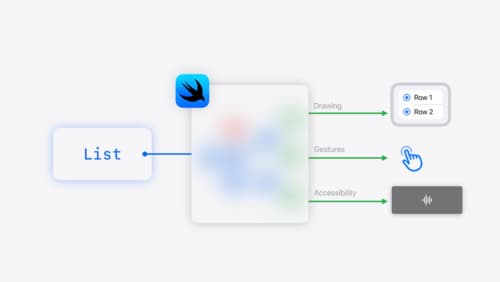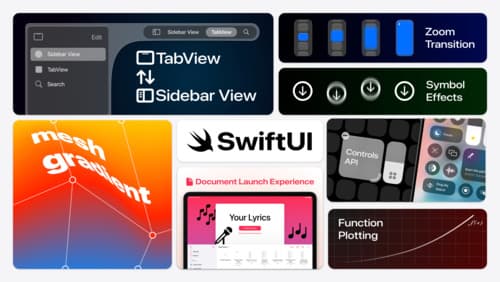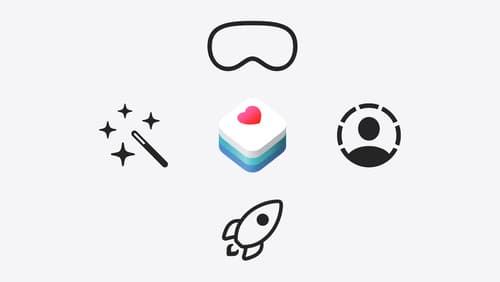what's the most efficient swiftui component for long list scrolling
Asked on 2024-08-08
1 search
The most efficient SwiftUI component for long list scrolling is the List view. The List view in SwiftUI is designed to handle large collections of data efficiently by leveraging view composition and state-driven updates. It provides built-in support for features like sectioned data, swipe actions, and more, making it a powerful tool for creating complex, scrollable interfaces.
For example, in the session SwiftUI essentials, it is mentioned that the List initializer can take a collection parameter, which is a convenience for creating a ForEach view. This allows List to generate views for each element in a collection and provide those to its container, making it highly efficient for long lists.
Additionally, the session What’s new in SwiftUI discusses new enhancements to the ScrollView component, which provides more programmatic control over scrolling behavior, including new scroll positions and the ability to turn off bouncing along a given axis. These enhancements can help you fine-tune the scrolling experience for long lists.
For more advanced use cases, you can also explore the LazyVGrid and LazyHGrid components, which are designed to efficiently handle large collections of data by only creating views for the items that are currently visible on the screen. This is demonstrated in the session Migrate your TVML app to SwiftUI, where a LazyVGrid is used to create a flexible and efficient layout for a vertically scrolling list.
Relevant Sessions:

SwiftUI essentials
Join us on a tour of SwiftUI, Apple’s declarative user interface framework. Learn essential concepts for building apps in SwiftUI, like views, state variables, and layout. Discover the breadth of APIs for building fully featured experiences and crafting unique custom components. Whether you’re brand new to SwiftUI or an experienced developer, you’ll learn how to take advantage of what SwiftUI has to offer when building great apps.

What’s new in SwiftUI
Learn how you can use SwiftUI to build great apps for any Apple platform. Explore a fresh new look and feel for tabs and documents on iPadOS. Improve your window management with new windowing APIs, and gain more control over immersive spaces and volumes in your visionOS apps. We’ll also take you through other exciting refinements that help you make expressive charts, customize and layout text, and so much more.

Get started with HealthKit in visionOS
Discover how to use HealthKit to create experiences that take full advantage of the spatial canvas. Learn the capabilities of HealthKit on the platform, find out how to bring an existing iPadOS app to visionOS, and explore the special considerations governing HealthKit during a Guest User session. You’ll also learn ways to use SwiftUI, Swift Charts, and Swift concurrency to craft innovative experiences with HealthKit.
